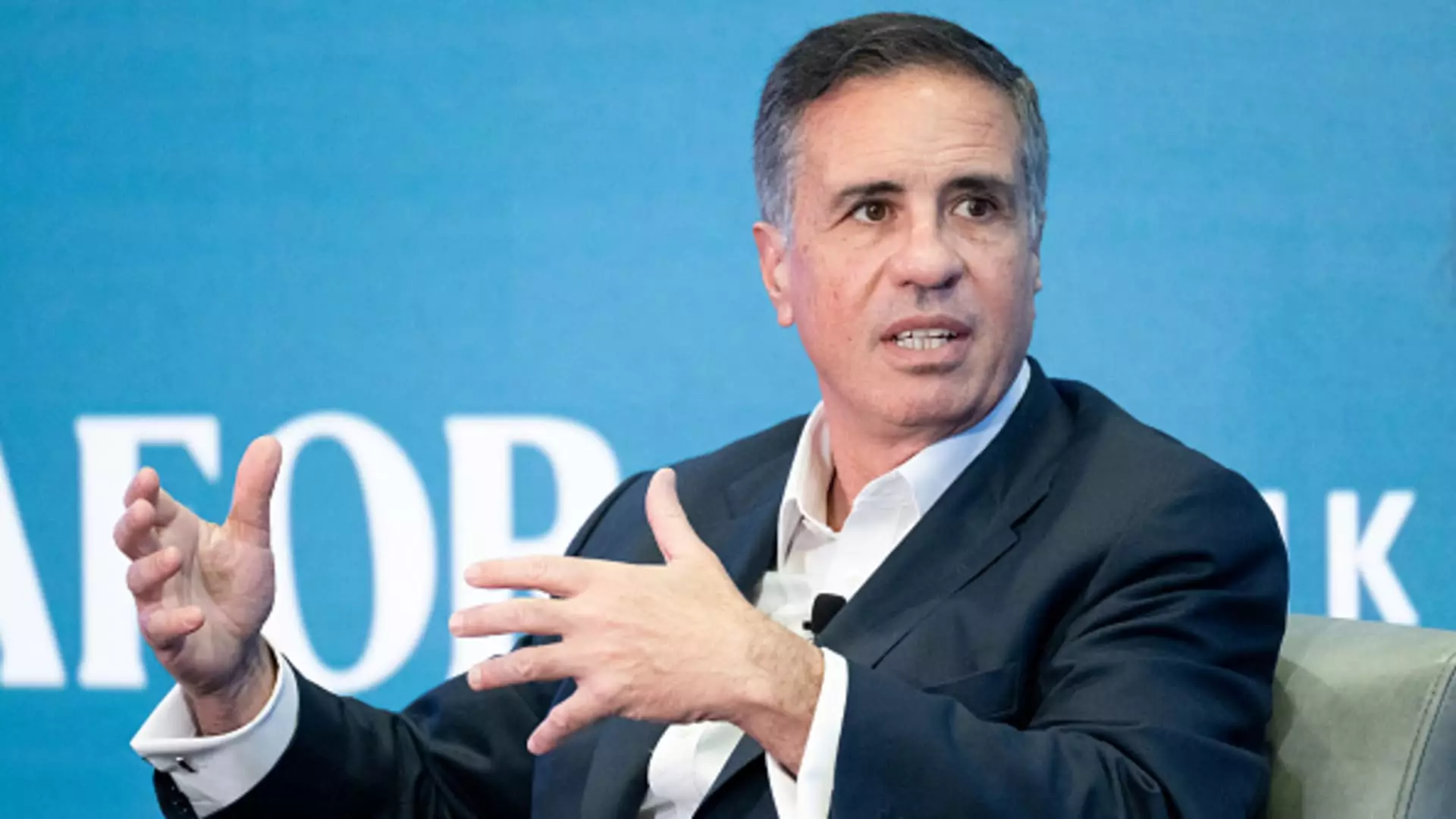Understanding the Market Dynamics: The Recent Turbulence at JPMorgan Chase

In a striking turn of events, JPMorgan Chase, the largest bank in the United States by assets, witnessed a 5% decline in its share price on a recent Tuesday following comments made by President Daniel Pinto at a financial conference. This announcement sent shockwaves through the investment community, which had held relatively optimistic expectations regarding the bank’s net interest income (NII) and operating expenses for 2025. Pinto emphasized that the current market expectations, particularly the projected NII for next year, were overly optimistic, sparking concerns among investors about the bank’s future performance.
Pinto’s remarks signified a shift from previous assurances that hinged on robust revenue generation contributed by increased deposits and lending activity. In the prior year, JPMorgan had surpassed expectations by securing more deposits than anticipated. However, the conversation has shifted significantly to a less optimistic trajectory, igniting fears that the bank might not maintain its momentum in an evolving economic landscape.
A prominent factor influencing JPMorgan Chase’s outlook is the anticipated actions of the Federal Reserve, particularly regarding interest rates. Pinto noted that upcoming cuts in interest rates could adversely affect the bank’s ability to generate income, as they would lead to lower yields on new loans and investments. The NII, crucial to any bank’s profitability, represents the differential between what banks earn from lending and what they pay to maintain deposits. As interest rates decline, banks face the dual challenge of reduced earnings from new loans while simultaneously navigating the deposits that remain stable or continue to increase in attractiveness for account holders seeking higher yields from alternative instruments.
Pinto argued that, despite the theoretical benefits of lower interest rates, such as reduced pressure on deposit repricing, the reality involves greater complexities. The bank’s asset sensitivity implies that it may struggle to maintain profit margins in a falling rate environment, which can deter investors who look to banks as safe investments.
Another critical component of Pinto’s outlook was the bank’s expenditure forecast. Analysts’ projections for JPMorgan’s expenses in the coming year sat around $94 billion, a number Pinto dismissed as unrealistic. He cited persistent inflationary pressures and the bank’s initiatives in expanding operations as key factors that would likely push expenses higher. While revenue generation remains paramount, the bank’s rising costs present a significant hurdle.
The pressures of inflation can mean numerous complications for large institutions like JPMorgan, which need to balance operational efficiency with competitive compensation and technological investments. Pinto’s candid acknowledgment of potential expense overruns reflects a broader concern within the banking industry as firms reassess budgets and capitalize on growth opportunities while remaining cautious of escalating costs.
As JPMorgan’s share price fluctuates, investor sentiment reveals broader apprehensions about the U.S. economic landscape and its effects on financial institutions’ profitability. The conversation around banking is not merely focused on individual stocks but reflects a larger trend of caution amid fears of economic deceleration. As market forces push banks to adapt to evolving conditions, competitive pressure mounts, compelling them to rethink strategies and reassess profitability.
While JPMorgan anticipates moderate growth in trading revenues for the third quarter, with slight increases in investment banking fees, the overall trading environment remains tumultuous, emphasizing a cautious approach to future forecasts.
JPMorgan Chase’s recent turbulence encapsulates the challenges faced by major banks in a fluctuating economic environment. Leaders like Daniel Pinto are tasked with navigating complex market dynamics, balancing optimistic projections with realistic assessments shaped by external conditions such as Federal Reserve actions and inflationary pressures. As JPMorgan redefines its financial trajectory amid these challenges, investors will need to focus on the bank’s adaptability in the face of uncertainty, reinforcing the need for continuous reassessment in the financial sector.





